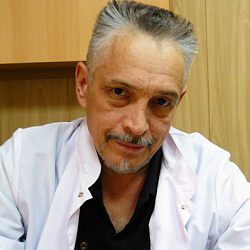Alcohol poisoning become more often in Tatarstan
Some experts associate the growth of alcohol-poisoning incidents with surrogates, others — with excessive consumption
The number of alcohol poisoning cases has increased sharply in Tatarstan, by 1,4 times, 385 cases over seven months of the year. At the same time, the sale of spirits in the republic has slightly decreased — to 3,065,1 thousand daL (-2,5%). According to some experts, the main reason is the increased volumes of surrogate alcohol in the conditions of increasing the cost of legal alcohol and falling real incomes of the population. Other experts believe that poisoning has nothing to do with the quality of alcohol and is associated with abuse. Read the details in the material of Realnoe Vremya.
“When there is a rise in prices, there are people who offer a cheap product”
The number of acute poisoning with alcohol and alcohol-containing liquids in Tatarstan in January-July increased by 42%, reaching 385 cases (9,9 per 100 thousand population), a year earlier — 271 cases (7,0 per 100 thousand population). Although this time doctors managed to save more lives — the number of deaths decreased from 143 to 134 cases.
The majority of those poisoned — 89,4% — were persons aged 18 years and older (344 cases), adolescents (15-17 years old) accounted for 6,2%, or 24 cases, children (0-14 years old) — 4,4% or 17 cases. The lion's share of patients — 82,6% — are men.
According to the data of the Department of Rospotrebnadzor for the Republic of Tatarstan, the analysis of the social situation of the victims showed that the majority of those poisoned are unemployed Tatarstan citizens — 42,8%. However, there are also a lot of those who are employed — 17,1%, pensioners — 9,9%, schoolchildren — 7,3%, students — 2,1%, others — 20,8%.
“The structure of alcohol poisoning is dominated by poisoning with ethanol — 76,3%, methanol — 6,8%, poisoning with unspecified alcohol (including 5,5% — alcohol surrogates) — 14,3%, other alcohols — 1,8%, 2-propanol — 0,8%," the supervisory authority reported.
According to sanitary inspectors, preventive work is being carried out to reduce the number of cases of alcohol poisoning and mortality, including control raids on places where alcohol-containing products are sold.


In turn, the director and founder of the Center for Research of Federal and Regional Alcohol Markets (CIFRRA), Vadim Drobiz, pointed out that a separate group of citizens get poisoned:
“As a rule, low-income people are poisoned and die from alcohol. Although both the middle class and the rich are considered alcoholics. By and large, poisoning has nothing to do with the illegal market. Because according to official long-term statistics, 90% of poisoning occurs with normal alcohol due to abuse. And only 10% are poisoning with low-quality surrogate products.”
At the same time, the interlocutor of the publication added that Tatarstan is a fairly high-income region, where legal alcohol mainly prevails: “This is a region with a high standard of living, with a fairly high level of average income. And it allows the absolute majority of the population to purchase legal alcohol.”
More than a third of alcohol in the republic is drunk by Kazan residents
According to the State Alcohol Inspectorate of Tatarstan, for the same seven months of the year, retail sales of alcoholic beverages decreased by 2,5%, to 3065,1 thousand daL (3143,4 thousand daL a year earlier). According to official statistics, drinking has become less in all municipalities except Kazan and the Pestrechinska district.
In the Tatarstan capital, alcohol sales has increased by 2,6%, to 1165,5 thousand daL. Pestrechinka residents purchased strong drinks by 10,6% more — 37,5 thousand daL, and compared to 2019 — even by more than a third (27,9 thousand daL). Apparently, Laishev residents also began to drink much more often during the pandemic, the increase in sales here was 18,5% compared to the two-year period, reaching 52,6 thousand daL.
Traditionally, large volumes of retail sales of alcohol were shown by Naberezhnye Chelny (436,3 thousand daL) and the Nizhnekamsk district (198,1 thousand daL.). Although sales volumes are falling here — by 4,7% and 5,9%, respectively.
On average, a Tatarstan citizen has become less likely to buy (and maybe even drink) alcoholic beverages for a year — by 200 ml or one glass of vodka less. If in that year there were 8,1 litres per capita (excluding beer), this year it is already 7,9 litres.
In terms of people, the residents of Verkhny Uslon buy alcohol the most — 10,4 litres, Laishevka is the second — 10,3 litres, Kazan residents close the top three — 9,3 litres. Aksubaevsk consumes the least per capita — 3,6 liters, Drozhzhanoye — 4 litres, and residents of the Spassky district — 4,1 litres.
Vadim Drobiz is convinced that where statistics show 4 litres per person, they drink more illegal alcohol or moonshine: “At least, not less. If there are about 10 litres per person, then it is unlikely that there are less than 8 litres where they drink 4 litres per capita legally.”
The level of income is also crucial: the higher the salary in a city or district is, the more legal alcohol is purchased there and less counterfeit:

In the State Alcohol Inspectorate of Tatarstan, the difference in consumption by district per capita was explained by preference, age, purchasing power, assortment in stores and other factors.
“The growth of retail sales volumes for low-alcohol beverages by 2,1 times”
Judging by the structure of sales, the use of certain strong drinks was somewhat reduced by Tatarstan residents, but low-alcohol ones were bought more often. For example, vodka was purchased by 6% less — 1475,9 thousand daL, and low-alcohol products — by as much as 2,1 times more. There is also a large increase in alcoholic beverages (+16%), champagne wines (+9%) and cognacs (+6%). But there is a decrease in wines — by 9%.
Specialists of the State Alcohol Inspectorate confirmed that in January-July 2021, 3,1 million decaliters of alcoholic beverages (excluding beer) were sold to the population of the republic. At the same time, vodka still prevailed in the total volume of retail sales — 48%, wines and wine drinks — 28%, alcoholic beverages — 12%, cognacs and cognac drinks — 6%, champagne wines — 4%, low-alcohol drinks — 2%.
Vadim Drobiz believes that there have been no serious shifts in consumption from vodka to cognac or whiskey this year.
Nevertheless, according to official data, vodka was bought less this year in all municipalities of Tatarstan, with the exception of the Alekseevsky district, where the volume remained at the same level (8,7 thousand daL), and the Pestrechinsky district, where the growth rate was 106% (18,5 thousand daL). Moreover, in the Pestrechinsky district, the sales of other alcoholic products also increased to 19 thousand daL (growth rate is 116%).